#Western Nicator
Text
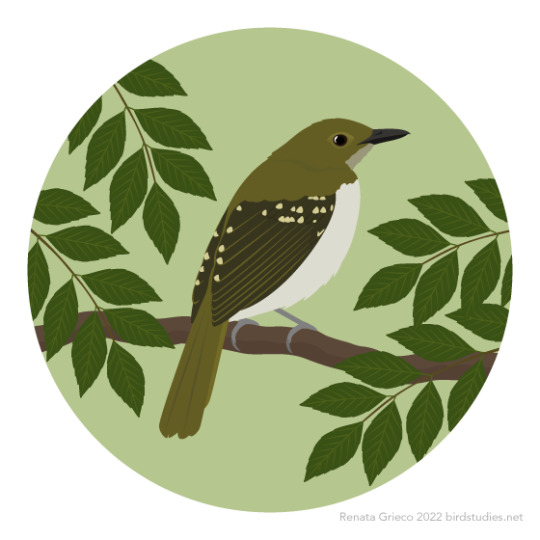
September 6, 2022 - Western Nicator (Nicator chloris)
These nicators are found in western and central Africa in forests, swamps, and shrubland. Foraging in pairs and sometimes joining mixed-species flocks, they eat mostly insects and other arthropods. They build small, somewhat flimsy nests from sticks, tendrils, and other materials where females lay a single egg and incubate it alone.
65 notes
·
View notes
Photo

Achaemenid Kings List & Commentary
The Achaemenid Empire (c. 550-330 BCE) was the first great Persian political entity in Western and Central Asia which stretched, at its peak, from Asia Minor to the Indus Valley and Mesopotamia through Egypt. It was founded by Cyrus II (the Great, r. c. 550-530 BCE) whose vision of a vast, all-inclusive Persian Empire was, more or less, maintained by his successors.
The Persians arrived in the region of modern-day Iran as part of a migratory group of Aryans (meaning “noble” or “free” and referencing a class of people, not a race). The Aryans – made up of many tribes such as the Alans, Bactrians, Medes, Parthians, and Persians, as well as others – settled in the area which became known as Ariana (Iran) – “the land of the Aryans”. The tribe which eventually became known as the Persians settled at Persis (modern-day Fars) which gave them their name.
Artaxerxes V (r. 330-329 BCE) was the short-lived throne name of Bessus, satrap of Bactria, who assassinated Darius III and proclaimed himself king. Alexander the Great found the dead or dying Darius III (the original accounts vary on this) in a cart where Bessus had left him and gave him a proper burial with all honors. Afterwards, Alexander had Bessus executed and took for himself the honor of the title Shahanshah, the king of kings of the Achaemenid Empire.
Conclusion
Although the Achaemenid Empire was no longer what it had been under Darius I, it was still intact when Alexander conquered it. He attempted a synthesis of Greek and Persian cultures by marrying his soldiers to Persian women, elevating Persian officers to high rank in his army, and comporting himself as a Persian king. His efforts were not appreciated by the Greek/Macedonian army and, after his death in 323 BCE, his vision was abandoned. Since he had named no clear successor at the time of his death, his generals went to war with each other to claim supremacy.
These wars (known as the Wars of Diadochi, 322-275 BCE), resulted, in part, in the rise of the Seleucid Empire (312-63 BCE) under Alexander's general Seleucus I Nicator (r. 305-281 BCE). The Seleucid Empire occupied approximately the same regions as the Achaemenid and, though it rose to a position of strength, gradually lost territory, first to the Parthians and then later to Rome. The Seleucids were succeeded by the Parthian Empire (247 BCE- 224 CE) which fell to the Sassanian Empire (224-651 CE). The Sassanians revived the best aspects of the Achaemenid Empire and would become the greatest expression of Persian culture in the ancient world.
The Sassanian Empire preserved the culture of the Achaemenids and, even after its fall to the invading Muslim Arabs, this culture would endure and spread throughout the ancient world. Many aspects of life in the modern day, from the seemingly mundane of birthday parties, desserts, and teatime to the more sublime of monotheism, mathematics, and aspects of art and architecture, were developed by the Sassanians drawing on the model of the Achaemenid Empire.
Continue reading...
41 notes
·
View notes
Text
Alexandria ad Aegyptum – The City of Alexander the Great
Alexandria became the capital of the powerful Ptolemaic Kingdom. By the 2nd century BC, Alexandria grew into a cosmopolitan metropolis of 300.000 people
Antioch ad Orontes – The Jewel of the East
301 BC, one of Alexander’s diadochi, Seleucus I Nicator (Victor), founded a new city at the bank of the Orontes in the fertile valley near the Mediterranean Sea. Soon, Antioch became the western capital of the vast Seleucid Empire.
Seleucia – The Heart of the Empire
The Seleucid Empire was the largest of all Hellenistic kingdoms, stretching at its height from Asia Minor and the eastern Mediterranean coast all the way to India.
The great city on the Tigris benefited from its optimal location in the middle of the Silk Road, the famed trade route of the ancient world.
Ephesus – The Gem of Asia Minor
Home to the Great Temple of Artemis, one of the Seven Wonders of the Ancient World. Most of its famous monumental architecture, however, comes from the Roman period, when Ephesus became one of the most important cities in the Empire.
Pergamon – The Hellenistic City That Replaced Athens
The Attalids wanted to create a second Athens, a cultural and intellectual hub of the ancient Hellenistic world. The Acropolis of Athens inspired Pergamon’s Acropolis, and the Library of Pergamon was second only to the Library of Alexandria.
#history#archeology#archeologicalsite#hellenistic#ancient city#ancient civilizations#greco roman#empire
4 notes
·
View notes
Text
5 Days Gorilla and Chimp Trekking | Frena Adventures

After breakfast, our local guide will greet you and transport you to the south-western part of Uganda. Along the way, you'll pass through a rural community known for its drumming and crafts. It's a fantastic spot to get some handcrafted souvenirs. Proceed to the equator line, which is one of Africa's most magnificent sights - the route of the sun - and take photographs. During the nine-hour ride, you will pass through mountains, tropical rainforest, and bamboo forest.
Your gorilla tracking adventure in Bwindi will begin today. Following breakfast and a lecture on park restrictions, you will proceed on the tracking expedition, which can last all day. We'll follow the gorilla family across the jungles and bamboo-covered mountains. Walking in this environment can be difficult and time-consuming, with no assurance of success. However, once you see the gorilla family and the silverback, the male leader of the group, any anxiety will evaporate. Most of the time, you'll be sitting 6 to 10 metres away from the family, staring into their large eyes as they go about their everyday business.
Meet at Kanyankye River Camp at 0800 hours for the most popular activity in this park, chimp tracking. Chimpanzees are the closest species to humans, yet they are also among the most endangered ape species. The walking tour allows you to see primates like L'hoest monkeys, black and white colobus, grey checked mangabey, red tailed monkey, bush babies, as well as birds like yellow spotted nicator, rumped tinker bird, little greenbelt green breasted pitta, black bee eater, the crowned eagle, and mammals like elephants.

After breakfast at the resort, you'll be driven back to Kampala via Mubende, a 5-hour trip away. The trip takes you through some of Uganda's most beautiful countryside and sweeping panoramas. Depending on how much time we have, we can tour the artisan and souvenir markets of Kampala before checking in at your hotel or being transferred to the airport. If are looking for 5 Days Gorilla and Chimp Trekking, then visit our website. At Frena Adventures, we believe in authentic African experiences and are experts in enabling memory-making moments, whether these are adrenaline-fueled adventures or culinary journeys.
1 note
·
View note
Text
Nicator
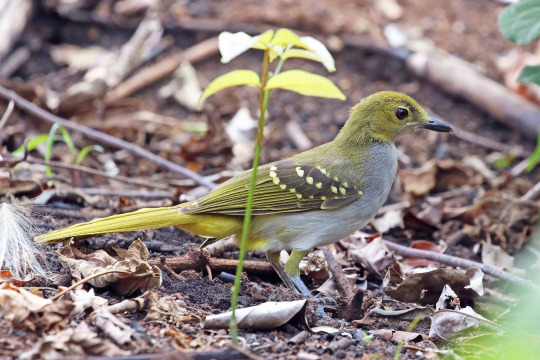
Western Nicator by Charles J. Sharp, CC BY-SA 4.0
Etymology: Conqueror
First Described By: Hartlaub & Finsch, 1870
Classification: Dinosauromorpha, Dinosauriformes, Dracohors, Dinosauria, Saurischia, Eusaurischia, Theropoda, Neotheropoda, Averostra, Tetanurae, Orionides, Avetheropoda, Coelurosauria, Tyrannoraptora, Maniraptoromorpha, Maniraptoriformes, Maniraptora, Pennaraptora, Paraves, Eumaniraptora, Averaptora, Avialae, Euavialae, Avebrevicauda, Pygostaylia, Ornithothoraces, Euornithes, Ornithuromorpha, Ornithurae, Neornithes, Neognathae, Neoaves, Inopinaves, Telluraves, Australaves, Eufalconimorphae, Psittacopasserae, Passeriformes, Eupasseres, Passeri, Euoscines, Passerides, Core Passerides, Sylviida, Sylvioidea, Nicatoridae
Referred Species: N. chloris (Western Nicator), N. gularis (Eastern Nicator), N. vireo (Yellow-Throated Nicator)
Status: Extant, Least Concern
Time and Place: Within the last 10,000 years, in the Holocene of the Quaternary

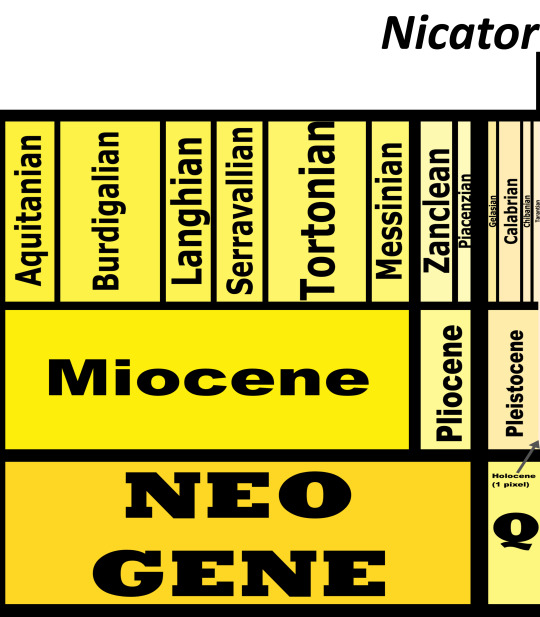
Nicators are known from Western, Central, and Southeastern Africa

By Haller1962, CC BY-SA 4.0
Physical Description: The Nicators are a genus of very distinctive, mid-sized passerines from Africa, ranging from 16 to 23 centimeters in length. The smallest of these species is the Yellow-Throated Nicator, with the Eastern and Western species both being larger than the Yellow-Throated variety and relatively similar in size to each other. They are all fairly olive in color along their backs, with black wings; these wings are spotted yellow. They have long tails, which are also olive green, with yellow tips. Their bellies are white, and they have a variety of differently colored faces. Their bills are grey, medium-length, and thick - with noticeable hooks of the top beak over the lower beak. They also have green and yellow colored bums.
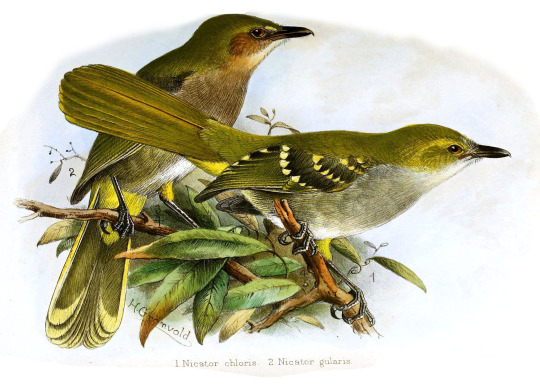
Western NIcator and Eastern Nicator, by Henrick Grönvold, in the Public Domain
Diet: The Nicators mainly eat arthropods, especially large butterflies, mantids, beetles, caterpillars, and even sometimes small vertebrates such as frogs and lizards, and even berries.
Behavior: Nicators feed usually alone, maybe sometimes in mated pairs but not often. These are very shy, secretive birds, foraging from the ground to the canopy and hiding among the leaves. They hop and run from branch to branch while looking for prey, sometimes even running through clumps of dry leaves. It occasionally flicks its wings while foraging, holding them open and drooped. They also fly silently in horizontal circuits around the base of a tree, while fanning its tail and flicking its wing - this may startle food in trunks into moving out to be see. The Nicators also will follow hoofed mammals to feed on insects they dredge up. They’ll explore tangled branches, and often pump their tails when excited about the prospect of food.
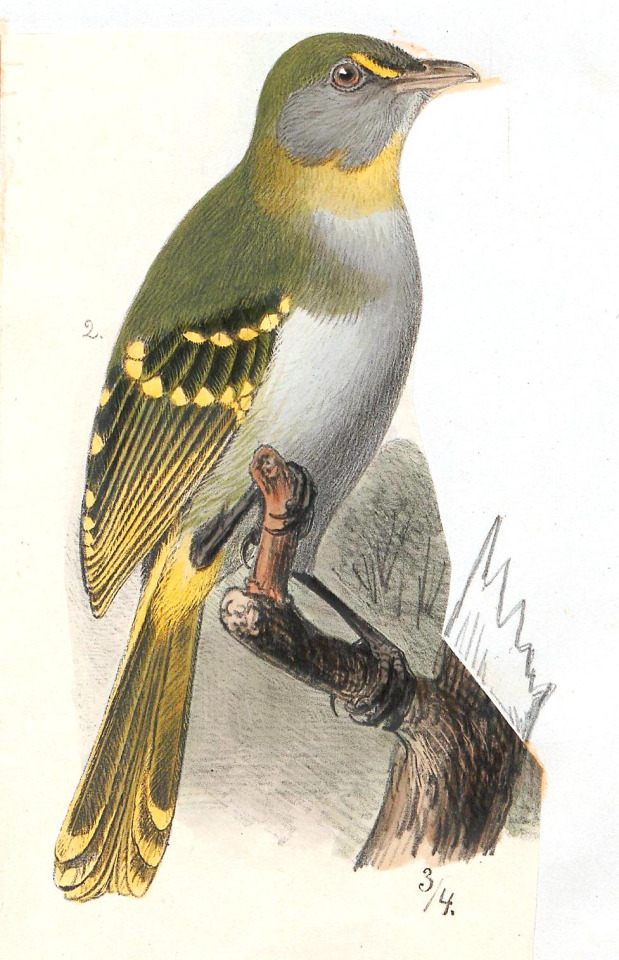
Yellow-Throated Nicator by Kunstanstalt v. C. Böhm, in the Public Domain
These birds make a wide variety of sounds, including far-carrying kwee-kuk-kuk-kuk notes, angry growls, and trilling songs; as well as loud whistling, churring notes, and “chok-chok-chok” calls. Interestingly enough, at least one species has been marked as mimicking other birds. They only sing in well-concealed perches in order to stay safe. None of these birds migrate, so they don’t have much of a migration call in addition to their variety of sounds.

Yellow-Throated Nicator by Dubi Shapiro, all rights reserved
Their breeding season varies throughout the year depending on the location where they live, with some populations starting in April, others February, others in December, others in June, others in April, others in August, others in May, and so on. In general, the peak of their breeding season is at the start of the rainy season. The birds are monogamous and are very territorial over their nests, which are flat and triangular. These nests are made of stout stems, leaves, even rootlets. They are usually placed low on the branches, usually not more than one meter high, in dense undergrowth. Usually about one to four eggs, on average just two are laid and incubated by the females. Both parents will feed the nestling young. The chicks hop among the branches after fledging, and stay with the parents (who will alarm them if there is danger approaching) for a little while after that.
Ecosystem: The Nicators live in dense evergreen, jungle, swamp, and semi-deciduous forests, as well as dense shrubbery among the savanna; they can be found in human-made habitats like logged forests, gardens, and plantations. Some are found along coastal forests and lowlands. None are found in particularly high-elevated areas.

Eastern Nicator by Alan Manson, CC BY-SA 2.0
Other: These birds are not threatened with extinction, and are very common throughout their ranges. They are even common in protected habitats, including national parks.
Species Differences: The Western Nicator lives in Western Africa, and it has an olive colored head with a yellow ring around its eye. The Eastern Nicator has a black stripe across its head, which is more taupe in color, and it lives along the eastern coast of Africa. The Yellow-Throated Nicator has a black head, with yellow stripes next to the eyes and - most distinctively - a yellow throat. This species lives in central Africa.
~ By Meig Dickson
Sources under the Cut
Fishpool, L. & Tobias, J. (2019). Eastern Nicator (Nicator gularis). In: del Hoyo, J., Elliott, A., Sargatal, J., Christie, D.A. & de Juana, E. (eds.). Handbook of the Birds of the World Alive. Lynx Edicions, Barcelona.
Fishpool, L. & Tobias, J. (2019). Western Nicator (Nicator chloris). In: del Hoyo, J., Elliott, A., Sargatal, J., Christie, D.A. & de Juana, E. (eds.). Handbook of the Birds of the World Alive. Lynx Edicions, Barcelona.
Fishpool, L. & Tobias, J. (2019). Yellow-throated Nicator (Nicator vireo). In: del Hoyo, J., Elliott, A., Sargatal, J., Christie, D.A. & de Juana, E. (eds.). Handbook of the Birds of the World Alive. Lynx Edicions, Barcelona.
Jobling, J. A. 2010. The Helm Dictionary of Scientific Bird Names. Christopher Helm Publishing, A&C Black Publishers Ltd, London.
#Nicator#Songbird#Dinosaur#Bird#Birblr#Nicator chloris#Nicator gularis#Nicator vireo#Birds#Dinosaurs#Passeriform#Quaternary#Africa#Omnivore#songbird saturday & sunday#Western Nicator#Eastern Nicator#Yellow-Throated Nicator#Factfile#biology#a dinosaur a day#a-dinosaur-a-day#dinosaur of the day#dinosaur-of-the-day#science#nature
205 notes
·
View notes
Text
just gonna write my own wizard book and singlehandedly create an entire globe spanning empire at this point so that the next gen of kids has something fun and magical that isn’t deeply laced w transphobia n racism n teaches them actual good lessons tbh. wizards are cool I want kids to have safe wizards
#god I wish I could create successful children’s media so bad#I have a few ideas even. outside of vague spite generated wizard funtime#but alas yall know how I am w the way I write stories#anyway be on the lookout for my cool new horror comedy musical about how the western culture surrounding death can lead to profound miscommu#nication that can fuck up children forever simply bc adults are too uncomfortable to talk abt it as a reasonable topic of education#it’s got monsterfucking!
3 notes
·
View notes
Photo


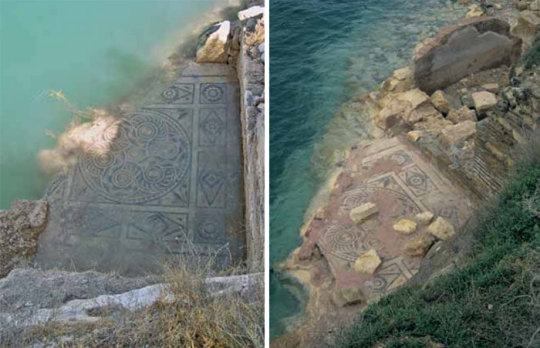
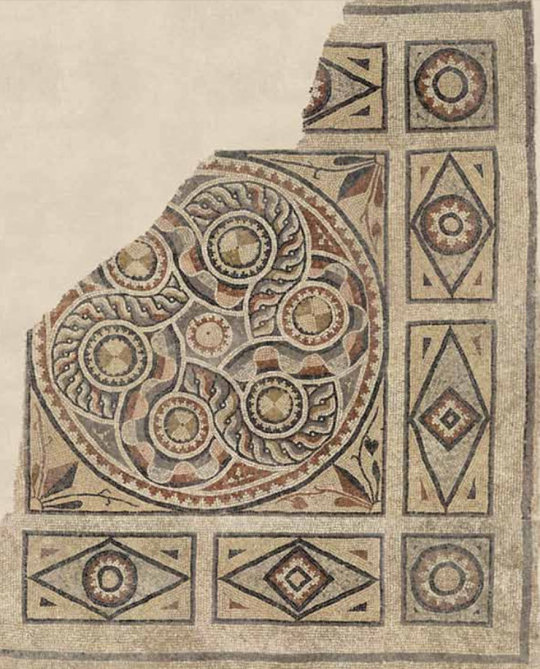
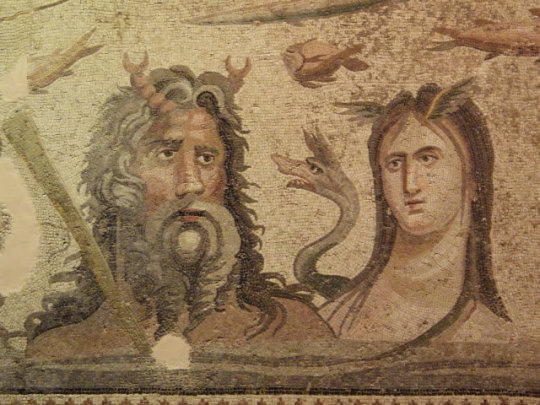

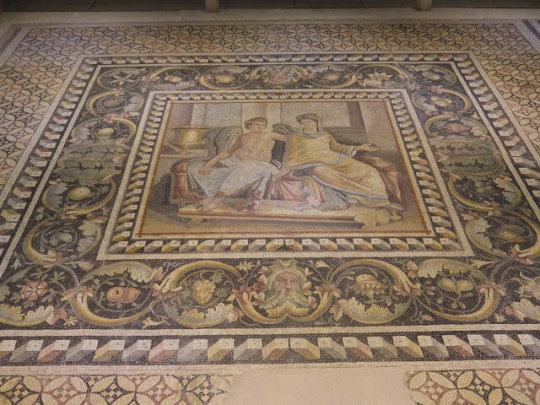
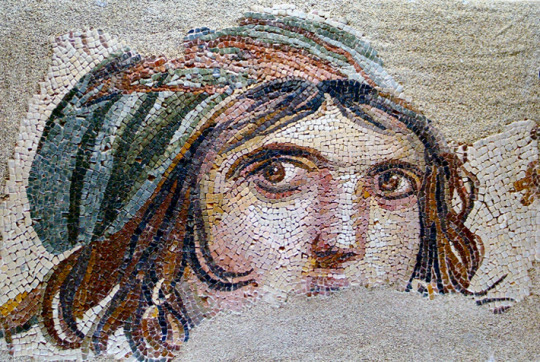
2,000-Year-Old Mosaics Uncovered In Zeugma Turkey Before Being Lost To Flooding
It wasn’t good policy that saved ancient Zeugma. It was a good story. In 2000, the construction of the massive Birecik Dam on the Euphrates River, less than a mile from the site, began to flood the entire area in southern Turkey.
Immediately, a ticking time-bomb narrative of the waters, which were rising an average of four inches per day for six months, brought Zeugma and its plight global fame. The water, which soon would engulf the archaeological remains, also brought increasing urgency to salvage efforts and emergency excavations that had already been taking place at the site, located about 500 miles from Istanbul, for almost a year. The media attention Zeugma received attracted generous aid from both private and government sources. Of particular concern was the removal of Zeugma’s mosaics, some of the most extraordinary examples to survive from the ancient world. Soon the world’s top restorers arrived from Italy to rescue them from the floodwaters. The focus on Zeugma also brought great numbers of international tourists—and even more money—a trend that continues today with the opening in September 2011 of the ultramodern $30 million Zeugma Mosaic Museum in the nearby city of Gaziantep.
But Zeugma’s story begins millennia before the dam was constructed. In the third century B.C., Seleucus I Nicator (“the Victor”), one of Alexander the Great’s commanders, established a settlement he called Seleucia, probably a katoikia, or military colony, on the western side of the river. On its eastern bank, he founded another town he called Apamea after his Persian-born wife. The two cities were physically connected by a pontoon bridge, but it is not known whether they were administered by separate municipal governments, and nothing of ancient Apamea, nor the bridge, survives. In 64 B.C., the Romans conquered Seleucia, renaming the town Zeugma, which means “bridge” or “crossing” in ancient Greek. After the collapse of the Seleucid Empire, the Romans added Zeugma to the lands of Antiochus I Theos of Commagene as a reward for his support of General Pompey during the conquest.
Throughout the imperial period, two Roman legions were based at Zeugma, increasing its strategic value and adding to its cosmopolitan culture. Due to the high volume of road traffic and its geographic position, Zeugma became a collection point for road tolls. Political and trade routes converged here and the city was the last stop in the Greco-Roman world before crossing over to the Persian Empire. For hundreds of years Zeugma prospered as a major commercial city as well as a military and religious center, eventually reaching its peak population of about 20,000–30,000 inhabitants. During the imperial period, Zeugma became the empire’s largest, and most strategically and economically important, eastern border city.
However, the good times in Zeugma declined along with the fortunes of the Roman Empire. After the Sassanids from Persia attacked the city in A.D. 253, its luxurious villas were reduced to ruins and used as shelters for animals. The city’s new inhabitants were mainly rural people who employed only simple building materials that did not survive. Zeugma’s grandeur and importance would remain forgotten for more than 1,700 years.
By Matthew Brunwasser.
#2000-Year-Old Mosaics Uncovered In Zeugma Turkey Before Being Lost To Flooding#Zeugma Mosaic Museum#Seleucid Empire#General Pompey#archeology#history#history news#ancient history#ancient civilizations#roman history#roman empire#art#artist#art work#mosaics#ancient mosaics#roman mosaic
149 notes
·
View notes
Link
Take the example of the Peloponnesian War, fought between Athens and Sparta in the last third of the 5th century BCE. This is how the great Athenian historian Thucydides attempted to date its outbreak:
The ‘Thirty Years’ Peace’, which was entered into after the conquest of Euboea, lasted 14 years; in the 15th year, in the 48th year of the priesthood of Chrysis at Argos, and when Aenesias was magistrate at Sparta, and there still being two months left of the magistracy of Pythodorus at Athens, six months after the battle of Potidaea, and at the beginning of spring, a Theban force a little over 300 strong … at about the first watch of the night made an armed entry into Plataea, a Boeotian town in alliance with Athens.
Where we would write, simply, ‘431 BCE’, Thucydides was obliged to synchronise the first shot of war to non-overlapping diplomatic, religious, civic, military, seasonal and hourly data points. The dates are intimately tied to central state institutions, dependent on bureaucratic list-making, applicable only within a self-limiting geography, and highly sensitive to political change. Indeed, they are not really dates at all, so much as synchronisms between multiple events, coordinating a network of better and lesser-known occurrences: what is being dated, and what dates it, belong to the same order of things. Imagine giving the date of the invasion of Iraq, your grandma’s birth or American independence in such a manner; and then try to explain this to someone from another country.
In the chaos that followed the death of Alexander the Great in Babylon in 323 BCE, all this changed. One of Alexander’s Macedonian generals, who would go on to win an enormous kingdom stretching from Bulgaria to Afghanistan, introduced a new system for reckoning the passage of time. It is known, after him, as the Seleucid Era. This was the world’s first continuous and irreversible tally of counted years. It is the unheralded ancestor of every subsequent era system, including the Christian Anno Domini system, our own Common Era, the Jewish Era of Creation, the Islamic Hijrah, the French Revolutionary Era, and so on.
The Seleucid Era began from Year 1 (set at Seleucus I Nicator’s arrival in Babylon in spring 311 BCE) and continued counting, getting bigger each year: n+1. At the death of Seleucus I, his son Antiochus I did not restart the clock, and nor did any of his successors. For the first time in history, historical time was marked by a number that never restarted, reversed or stopped. It is still going. This was time as we know it – 2019, 2020, 2021, and so on – a transcendent, universal, absolute, freestanding, regularly increasing number. It was unconnected to political events, the life-cycle of rulers or conquest. It was not dependent on an imperial bureaucracy or a scribal elite. It could be used at distance to correlate events.
Most importantly, as a regularly increasing number, the Seleucid Era permitted an entirely new kind of predictability. It had been impossible for a subject of, say, the elderly Nebuchadnezzar II, in the 40th year of his reign (he reigned for 43 years), to confidently and accurately conceive, name and hold in the imagination a date several years, decades or centuries into the future. Now, because of the Seleucid Era, this was easy, unproblematic and uniform for every subject of the Seleucid kings. [...]
Why does all this matter? While chronology and dating might at first seem not the most exciting of things, they are the stuff that history is made on, for dates do two things: they allow things to happen only once, and they insist on the ordering and interrelation of all happenings. Every event must be chained to its place in time before it becomes an available object of historical articulation. And the modes by which we date the world, by which we apprehend historical duration and the passage of time, frame how we experience our present, conceive a future, remember the past, reconcile with impermanence, and make sense of a world far wider, older and more enduring than any of us. [...]
Empires make claims to time and space. And then their subject populations push back. From the 2nd century BCE down to its ultimate demise in 64 BCE, the Seleucid empire faced increasingly violent and assertive opposition from its subordinated communities in its heartland territories of the Levant, Babylonia and western Iran. The most famous of these resistance movements was the Maccabean Revolt, when the Jews of Judea marched against the Seleucid armies of king Antiochus IV and his successors, liberating the Jerusalem Temple and eventually carving out an independent political space – the Hasmonean kingdom – in the territory of modern Israel. These are the events still commemorated in the festival of Hanukkah. Such resistance to the Seleucids not only targeted their physical infrastructure, fiscal demands, colonial settlements and this-worldly assertions of political dominance; it also targeted the temporal order they had established.
12 notes
·
View notes
Photo

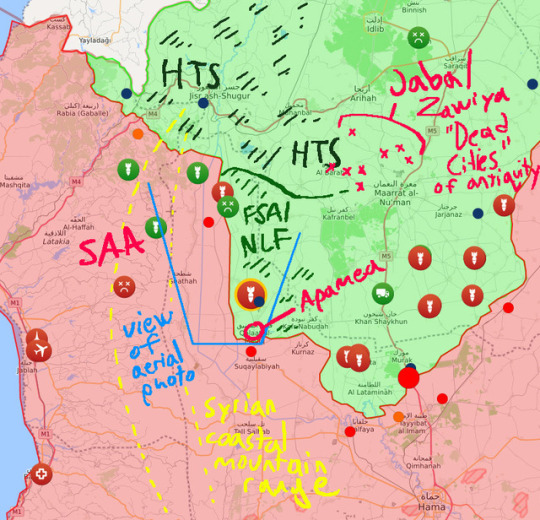
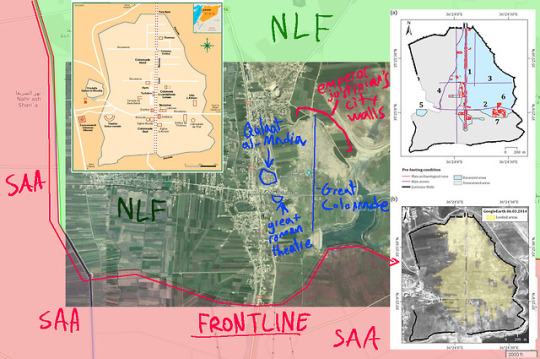
Analysis of the southwestern Idlib frontline, including recent bridges blown out by rebels on the Ghab plain and heritage landmarks, east of the mountain range that is held by the SAA
In the lower right of the first info graphic should be a turkish observation post.
The rebels here are all NLF/Turkish backed FSA
This is potentially the weakest yet the most culturally sensitive front line of the rebels in Idlib on account of the Syrian artillery facing them, to the west, on the ridge of the Syrian coastal mountain range/Jabal An-Nusariyah. Fun fact: this mountain range is home to Masyaf and was the domain of the late Order of Assassins (Nizari Hashshashin), of ass ass creed fame and the origin of the term “assassin” itself.
This position is greatly untenable, so rebels have blown out the agricultural canal bridges crossing into their territory and have begun to dig in. To this point, it is a culturally sensitive defensive position because the literal frontline lays before the rebel occupied Seleucid/Roman metropolis of Apameia, historically renown for being part of the Syrian Tetrapolis, the cities of Antioch, Seleucia Pieria, Apamea, and Laodicea (contemporary Latakia) that were regarded as the greatest ones founded by Alexander the Great’s general, Seleucus Nicator. The ruined site lays beside, and dwarfs the city and medieval citadel of Qalaat al-Madiq, which was once purchased and occupied by the order of Assassins.
As it stands, Apamea is home to two significant ancient features of remark:
The roman theatre that, along with the Roman Theatre in Ephesus, is the largest surviving theatres of it’s kind. It remains largely unexcavated:
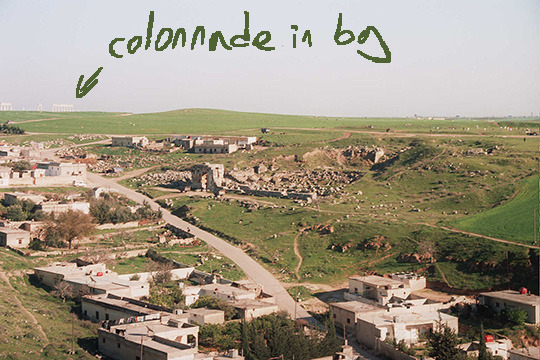
And of greater note, the Great colonnade, the largest surviving colonnade structure in the Roman empire, stretching across the entire city site, which also lay mostly unexcavated.

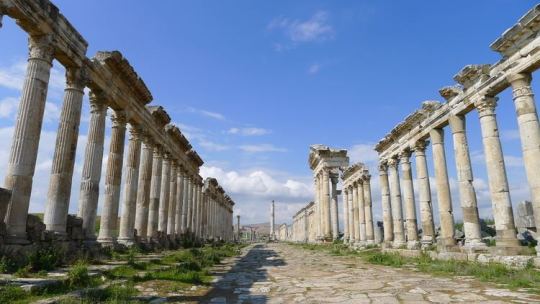
And i point out the unexcavated nature of the site because, unlike ISIS occupied sites, which got worldwide coverage for how ISIS looted and destroyed ancient landmarks, here in apameia and in other places like it, the site has been widely looted and ravaged under western-backed rebel watch:
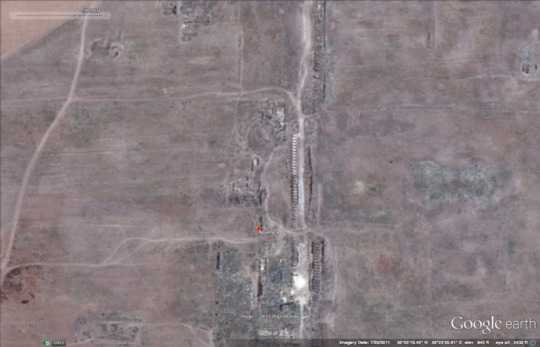

So already, there is extensive damage to the site and this stands to show how much the rebels value the integrity of the ruins if and when the Syrian Arab Army arrives.
You can view the site here:
https://goo.gl/maps/fwLqmtpCVhz
Ground conflict isn’t really anticipated quite yet as the SAA will be expected to focus the brunt of it’s offense against HTS far to the northwest. However, war will come to Qalaat al-Madiq and beyond, to deeper into Idlib, where even more culturally sensitive areas reside. Namely, the “dead cities” as the medieval Syrians and islamic cartographers came to call the vast array of ruined cities and desolate villages (over 700 in total) that once formed this highly urbanized, commercially affluent highlands during the height of the Roman empire. This region quickly became desolate following the Arab conquests and transformation of the region into a contested space between the Byzantines and Muslim successors, made permanently economically depressed after the interruption of the Roman trade routes that were integral to the immense wealth of agricultural/trade networks in the area.
The state of these dead cities provides a glimpse into the transition from pagan to christian/byzantine rome. They are scattered in clusters from southern idlib, North to Afrin and across to Aleppo. The closest cluster to Apamea is the one in Jabal Zawiya, which i marked with several of the most significant sites there including Serjilla, of which i attached two photos.

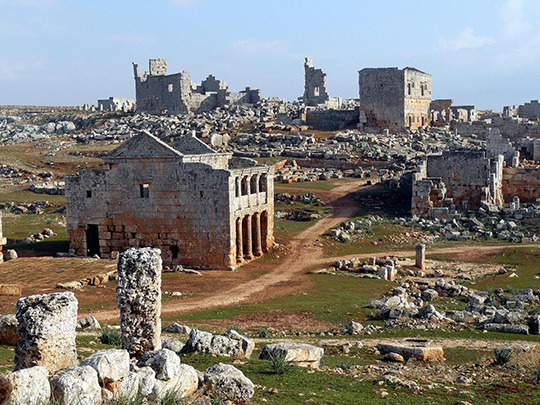
Much of these sites are not as endangered as grand sites like Apamea, due to their relatively remote locations.
#qalaat al-madiq#apamea#apameia#seleucus#seleucid#roman empire#dead cities#byzantine#byzantium#byzantine empire#antiquity#idlib#syria#syrian arab army#NLF#National Front for Liberation#fsa#Free syrian army#SAA#Syrian civil war
25 notes
·
View notes
Photo
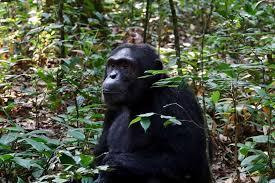

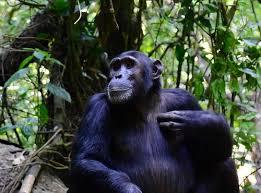
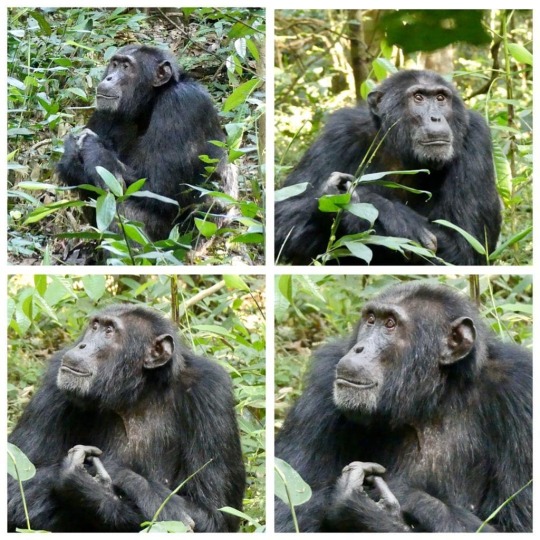
CHIMPANZEE TRACKING SAFARI IN KIBALE NATIONAL PARK
The park is located in the Western Part of Uganda in the Districts of Kabarole and Kamwenge. It is best known for the number and variety of resident Primates. An Impressive list of 13 Primate species includes Uganda’s largest population of Chimpanzees with an Estimated 1450. Habituated Groups can be tracked with experienced Ranger Guides. Chimpanzee tracking guidelines, permits, booking procedures, itineraries and habituation information. Kibale Forest National Park is one of the best safari destination in Africa for chimpanzee trekking in Uganda. Kibale’s 795 km2 National Park contains one of the most beautiful and with the most varying tracts of tropical forest in the whole of Uganda. This is a place to a number of forest wildlife, most especially 13 species of primate coupled with chimpanzees. The Forest covering predominates in the central and northern part of the park on the raised Fort Portal plateau. At the park’s northern tip, Kibale is highest and stands 1590m above sea level Kibale Safari.
It’s a 12 km hike and usually done in the dry seasons. The months are mid November-February, June and September. Hiking helps discover the park’s assorted habitats such as river line forest, swamp, grassland and tropical rainforest.
Birding in Kibale
Visit Bigodi a top birders spot. It’s famous for wildlife such as chimpanzees, red colobus, black and white colobus, red tailed monkey, bushbuck as well as mongoose. It has about 138 bird species seen on nature walks within.
Cultural Trail
The nature walk begins from Kanyanchu or Sebitoli and it takes about 2-6 days. The enroute will help discover the forest and late rest in the community-run campsites close to the villages of Kikoni,Nyakalongo and Nyaibanda.
Additionally the wettest area is Northern Kibale , receiving an average annual rainfall of equal to 1700mm, mainly during March-May and September-November. The climate is usually pleasant with an average annual temperature range of 14 to 27oC. Temperatures are at maximum (& rainfall lower) in the south where the terrain drops onto the blistering rift valley floor and forest provides way to open grassland. Southern Kibale borders Queen Elizabeth National Park and collectively these preserved areas maintain a 180 kilometer long migration corridor for wildlife that stretches from the remote southern sector of Queen Elizabeth National Park in “Ishasha”, to the north of Kibale in “Sebitoli”. The Kibale-Fort Portal region is one of Uganda’s most pleasing places to explore. The park is located close to the calm Ndali Kasenda crater area & which takes a half day’s drive to Queen Elizabeth, Rwenzori Mountains & Semuliki National Parks along with the Toro-Semliki Wildlife Reserve.
Flora and fauna in Kibale Forest
Kibale’s varied altitude holds up different varieties of habitat, ranging from moist evergreen forest (wet tropical forest) along the Fort Portal plateau, then through the dry tropical forest (moist semi deciduous), and then to the woodland & savanna along the rift valley floor.
In the central part of the park, around Kanyanchu, the high forest consist of a mixture of evergreen trees and deciduous with the evergreen species being dominant. Vegetation rise to over 55m and establish a semi closed canopy of massive stratified tree crowns. With shade tolerant herbs, a variety of ferns, shrubs and broad leaved forest grasses, the undergrowth is sparse. 351 tree species have been registered in the park.
Chimpanzee Tracking Safari
The density and diversity of primates in Kibale National Park is the highest in the whole of Africa. The most well known of its 13 species are the chimpanzees, our closest relative. Kibale’s 1450 chimpanzee indicate Uganda’s biggest population of this threatened primate. A Uganda Safari can enable you to see all these primates. Additionally Kibale is home to the uncommon I’Hoest’s monkey as well as East Africa’s biggest population of the endangered red colobus monkey. The black & white colobus, red tailed monkey, blue monkey, olive baboon, grey cheeked mangabey, bush baby and potto are among the other primates.
Other mammals are also present, though they are hardly seen. These consist of buffalo, leopard, bush pig elephant, and duiker. A neat viewer could also see amphibians and reptiles and a colorful variety of butterflies.
The park is a home to 325 variety of bird species, including 6 that are native to the Albertine Rift destination, that is to say dusky crimsonwing, black-capped apalis, blue-headed sunbird, collared apalis,red-faced woodland warbler and purple-breasted sunbird. Other Kibale specials are the green breasted pitta,African pitta, black bee-eater,Abyssinian groundthrush, yellow spotted nicator, little greenbul, black-eared ground thrush, brownchested alethe, yellow rumped tinker bird, blue-breasted kingfisher, along with the crowned eagle.
Local people
The people living around Kibale National Park are mostly Batoro and Bakiga. The Batoro are native to the region while the Bakiga are just immigrants from the thickly populated southwestern part of the country. The Batoro carry pride in the ethnical heritage of the Kingdom of Toro, a section of the ancient kingdoms of the Great Lakes region in Africa. The king (Omukama) and the kingdom personify the traditional along with cultural values of the Batoro. The immigrants (Bakiga) still hold their culture and tradition as expressed in their dance, folklore, as well as language.
1 note
·
View note
Photo
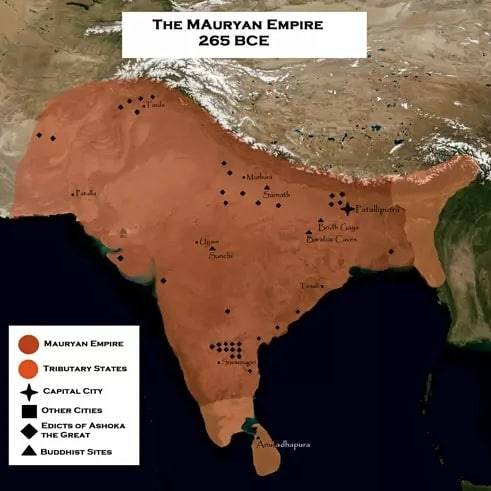
Mauryan Empire – Rise of the Mauryan :- Chandragupta, with the help of an intelligent and politically astute Brahmin, Kautilya usurped the throne by defeating Dhana Nanda in 321 BC. A] Founder of Mauryan Empire – Chandragupta Maurya :- 1) It is generally accepted that Chandragupta was an orphaned boy born into a humble family who was trained by Kautilya (aka Chanakya). 2) Greek accounts mention him as Sandrokottos. 3)Alexander had abandoned his India conquest in 324 BC and within a year, Chandragupta had defeated some of the Greek-ruled cities in the north-western part of the country. 4)Kautilya provided the strategy while Chandragupta executed it. They had raised a mercenary army of their own and defeated Dhana Nanda and laid the foundations of the Maurya Empire in about 321 BC. 5) In 305 BC, he entered into a treaty with Seleucus Nicator (a general of Alexander who ruled over northwest India) in which Chandragupta acquired Baluchistan, eastern Afghanistan and the region to the west of Indus. 6) He also married Seleucus Nicator’s daughter. In return, Seleucus Nicator got 500 elephants. Seleucus Nicator avoided a war with the mighty Chandragupta. 7) Megasthenes was the Greek ambassador at Chandragupta’s court. His reign lasted from 321 BC to 297 BC. He abdicated the throne in favour of his son, Bindusara and went to Karnataka with Jain monk Bhadrabahu. 8) He had embraced Jainism and is said to have starved himself to death according to the Jain tradition at Shravanabelagola. B] Second Ruler of the Mauryan Empire – Bindusara :- 1) Son of Chandragupta. 2) He ruled from 297 BC to 273 BC. 3) Also called Amitraghata (Slayer of foes) or Amitrochates in Greek sources. 4) Deimachus was a Greek ambassador at his court. 5)He had appointed his son, Ashoka as the governor of Ujjain. 6)Bindusara is believed to have extended the Mauryan Empire to Mysore as well. IMAGE 2/4 -Statue of Mauryan Emperor Chandragupta Maurya. IMAGE 3/4 - Chandragupta, from an Indian postage stamp. IMAGE 4/4 - A silver coin of 1 karshapana of the Maurya empire, period of Bindusara Maurya. https://www.instagram.com/p/B_Uv_16HsfO/?igshid=73jpu6qicuab
0 notes
Text
Essay: Native American Mascots
This rise is about aboriginal American mascots. domestic American mascots, and close other descriptions of aboriginal Americans in popular culture, atomic number 18 stereotypes that meaning on the past, and gum olibanum these stereotypes ache the mindable mentality that associate aborigine Americans besides with the past.\n\n\n primordial American mascots, and around other descriptions of native-born Americans in popular culture, are stereotypes that center on the past, and thus these stereotypes support the questionable outlook that links inwrought Americans l unmatchablesome(prenominal) with the past. Consequently, this articulate works to blur the lives of innovational primordial Americans as distinguishing and evaluate the lives of contemporary Native Americans challenges this stereotype.\n\nThe staple fiber motive behind the metro to removal of Native American mascots is so passionate and warm is because when the activists condemn the mascots they are alike criticizing a form of American identity that is associated to the false tradition about the Western fall in States (Davis 14).\n\nNative American mascots fake, misrepresent, and smear many features of Native American cultures, such as employ of drums drumming, dancing, singing, and other activities exclusively associated with the Native Americans. Another paradox associated to the thought that Native Americans are universe honored by the mascots is that compulsive views of Native Americans, and the practice of victimisation symbol of Native Americans to exist sport teams mascots. This belief started soon after the last of the Native American nations were subjugated or controlled. Thus, the about important question arises in ones mind: who is existence honored by Native American mascots, Native Americans or the Dominant Majority?\n\nThe mascots, and most other images of Native Americans in the society, lump all tribes of Native Americans collectively, wrongly commu nicating that in that respect is only one Native American culture, making the government agency the diversity of Native American cultures invisible. For example, only some Native American nations have semipolitical structures that are led by a male chief, and headdresses are worn by members of only a few nations. The legality is that Indians are not one culture, in fact they were numerous distinct tribes with their own civilizations. only Whites categorized the variety of cultures and societies as a single entity for the purport of description and compend (Berkhofer 3). Berkhofer continues this analysis when he states that This concept denies or misrepresents social linguistic ethnic and other differences among people so lapses into stereotype. (3).\n\nKindly install custom made trys, Term Papers, look for Papers, Thesis, Dissertation, Assignment, Book Reports, Reviews, Presentations, Projects, Case Studies, Coursework, Homework, notional Writing, Critical Thinking, on t he essay topic by clicking on the order page.\n \nSee in addition\n\nEssay: Use of Swirls on Web Pages\nEssay: The most common method of contagion of AIDS\nEssay: mental Help\nEssay: The imagination of Brand Equity\nEssay: Shortfalls of Varner Company\nIf you want to ticktock a full essay, order it on our website:
Custom essay writing service. Free essay/order revisions. Essays of any complexity! Courseworks, term papers, research papers. 100% confidential! Homework live help. Custom Essay Order is available 24/7!
0 notes
Photo
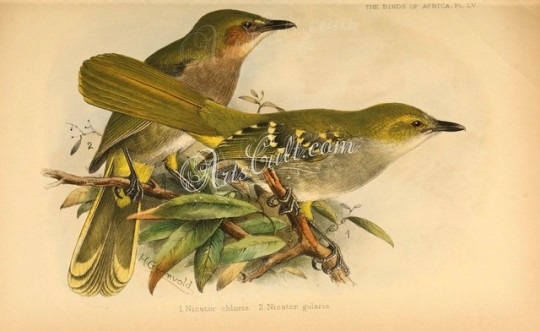
Western Nicator, Eastern Nicator - high resolution image from old book.
0 notes